|
A.S.S.E.Psi.
web site (History of Psychiatry and Psychoanalytic Psychotherapy
)
A.S.S.E.Psi.NEWS
(to subscribe our monthly newsletter)
Ce.Psi.Di. (Centro
di Psicoterapia Dinamica "Mauro Mancia")
Maitres
à dispenser (Our reviews about psychoanalytic congresses)
Biblio
Reviews (Recensioni)
Congressi
ECM (in italian)
Events
(our congresses)
Tatiana Rosenthal
and ... other 'psycho-suiciders'
Thalassa.
Portolano of Psychoanalysis
PsychoWitz - Psychoanalysis and Humor (...per ridere un po'!)
Giuseppe Leo's Art
Gallery
Spazio
Rosenthal (femininity and psychoanalysis)
Psicoanalisi
Europea Video
Channel
A.S.S.E.Psi. Video
Channel
Ultima uscita/New issue:
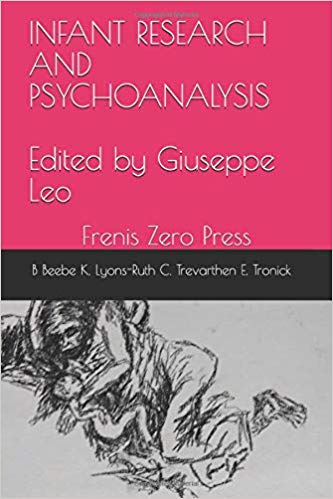
"Infant
Research and Psychoanalysis"
Edited
by Giuseppe Leo
Writings
by: B. Beebe K.
Lyons-Ruth J. P. Nahum E. Solheim C.
Trevarthen E. Z. Tronick L.
Vulliez-Coady
Publisher:
Frenis Zero
Collection:
Borders of Psychoanalysis
Year:
2018
Pages:
273
ISBN: 978-88-97479-14-7
Click
here to order the book

"Fundamentalism
and Psychoanalysis"
Edited
by Giuseppe Leo
Prefaced
by: Vamik D. Volkan
Writings
by: L. Auestad W.
Bohleber S. Varvin L. West
Publisher:
Frenis Zero
Collection:
Mediterranean Id-entities
Year:
2017
Pages:
214
ISBN: 978-88-97479-13-0
Click
here to order the book
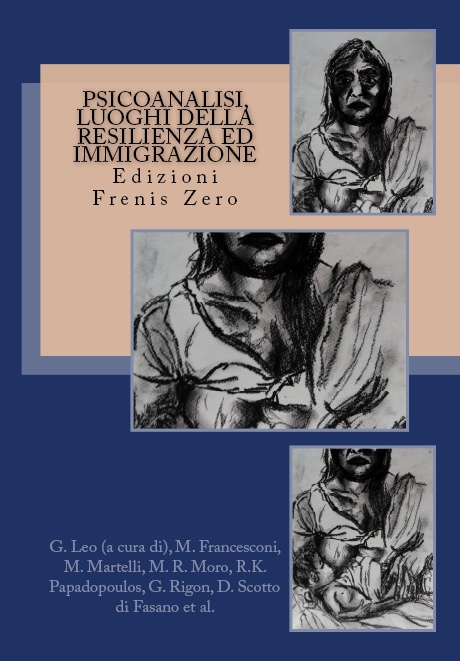
"Psicoanalisi, luoghi della resilienza
ed immigrazione"
Edited
by/a cura di:
Giuseppe Leo
Writings by/scritti di:
S.
Araùjo Cabral, L.
Curone,
M. Francesconi,
L.
Frattini,
S.
Impagliazzo,
D. Centenaro Levandowski, G. Magnani, M. Manetti, C. Marangio,
G. A. Marra e Rosa, M. Martelli, M. R. Moro,
R. K. Papadopoulos, A. Pellicciari,
G. Rigon,
D.
Scotto di Fasano,
E. Zini, A. Zunino
Editore/Publisher: Edizioni Frenis Zero
Collection/Collana: Mediterranean
Id-entities
Anno/Year:
2017
Pagine/Pages:
372
ISBN:978-88-97479-11-6

"Psicoanalisi in Terra Santa"
Edited
by/a cura di: Ambra Cusin & Giuseppe Leo
Prefaced by/prefazione
di:
Anna Sabatini Scalmati
Writings by/scritti di:
H. Abramovitch A. Cusin M. Dwairy A. Lotem M.
Mansur M. P. Salatiello Afterword
by/ Postfazione
di:
Ch. U. Schminck-Gustavus
Notes by/ Note di: Nader Akkad
Editore/Publisher: Edizioni Frenis Zero
Collection/Collana: Mediterranean
Id-entities
Anno/Year:
2017
Pagine/Pages:
170
ISBN:978-88-97479-12-3

"Essere bambini a Gaza. Il trauma
infinito"
Authored
by/autore: Maria Patrizia Salatiello
Editore/Publisher: Edizioni Frenis Zero
Collection/Collana: Mediterranean
Id-entities
Anno/Year:
2016
Pagine/Pages:
242
ISBN:978-88-97479-08-6

Psychoanalysis,
Collective Traumas and Memory Places (English Edition)
Edited
by/a cura di: Giuseppe Leo Prefaced by/prefazione
di:
R.D.Hinshelwood
Writings by/scritti di: J. Altounian
W. Bohleber J. Deutsch
H. Halberstadt-Freud Y. Gampel
N. Janigro R.K. Papadopoulos
M. Ritter S. Varvin H.-J. Wirth
Editore/Publisher: Edizioni Frenis Zero
Collection/Collana: Mediterranean
Id-entities
Anno/Year:
2015
Pagine/Pages:
330
ISBN:978-88-97479-09-3
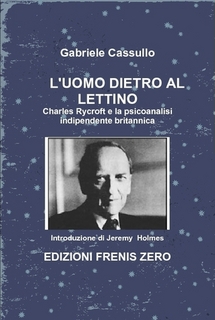
"L'uomo
dietro al lettino" di
Gabriele Cassullo
Prefaced
by/prefazione di: Jeremy
Holmes
Editore/Publisher: Edizioni Frenis Zero
Collection/Collana: Biografie
dell'Inconscio
Anno/Year:
2015
Pagine/Pages:
350
ISBN:978-88-97479-07-9
Prezzo/Price:
€ 29,00
Click
here to order the book
(per Edizione
rilegata- Hardcover clicca qui)
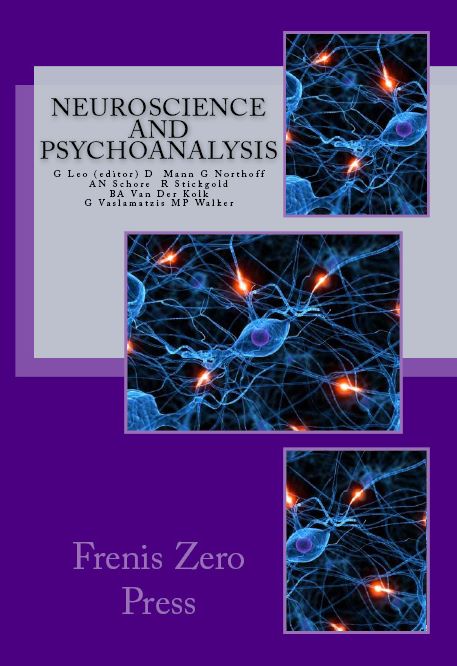
"Neuroscience
and Psychoanalysis" (English Edition)
Edited by/a cura di: Giuseppe Leo Prefaced by/prefazione
di: Georg Northoff
Writings by/scritti di: D. Mann
A. N. Schore R. Stickgold
B.A. Van Der Kolk G. Vaslamatzis M.P. Walker
Editore/Publisher: Edizioni Frenis Zero
Collection/Collana: Psicoanalisi e neuroscienze
Anno/Year: 2014
Pagine/Pages: 300
ISBN:978-88-97479-06-2
Prezzo/Price: € 49,00
Click
here to order the book

Vera
Schmidt, "Scritti su psicoanalisi infantile ed
educazione"
Edited by/a cura di: Giuseppe Leo Prefaced by/prefazione
di: Alberto Angelini
Introduced by/introduzione di: Vlasta Polojaz
Afterword by/post-fazione di: Rita Corsa
Editore/Publisher: Edizioni Frenis Zero
Collana: Biografie dell'Inconscio
Anno/Year: 2014
Pagine/Pages: 248
ISBN:978-88-97479-05-5
Prezzo/Price: € 29,00
Click
here to order the book

Resnik,
S. et al. (a cura di Monica Ferri), "L'ascolto dei
sensi e dei luoghi nella relazione terapeutica"
Writings by:A.
Ambrosini, A. Bimbi, M. Ferri, G.
Gabbriellini, A. Luperini, S. Resnik,
S. Rodighiero, R. Tancredi, A. Taquini Resnik,
G. Trippi
Editore/Publisher: Edizioni Frenis Zero
Collana: Confini della Psicoanalisi
Anno/Year: 2013
Pagine/Pages: 156
ISBN:978-88-97479-04-8
Prezzo/Price: € 37,00
Click
here to order the book
Silvio
G. Cusin, "Sessualità e conoscenza"
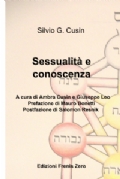
A cura di/Edited by: A. Cusin & G. Leo
Editore/Publisher: Edizioni Frenis Zero
Collana/Collection: Biografie dell'Inconscio
Anno/Year: 2013
Pagine/Pages: 476
ISBN: 978-88-97479-03-1
Prezzo/Price:
€ 39,00
Click
here to order the book
AA.VV.,
"Psicoanalisi e luoghi della riabilitazione", a cura
di G. Leo e G. Riefolo (Editors)
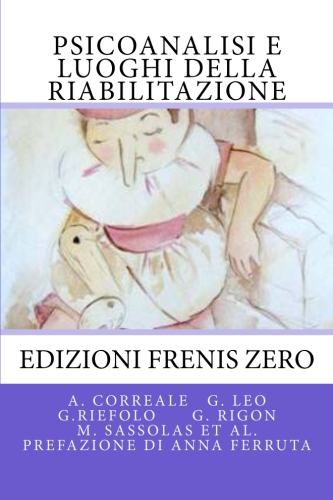
A cura di/Edited by: G. Leo & G. Riefolo
Editore/Publisher: Edizioni Frenis Zero
Collana/Collection: Id-entità mediterranee
Anno/Year: 2013
Pagine/Pages: 426
ISBN: 978-88-903710-9-7
Prezzo/Price:
€ 39,00
Click
here to order the book
AA.VV.,
"Scrittura e memoria", a cura di R. Bolletti (Editor)

Writings by: J.
Altounian, S. Amati Sas, A. Arslan, R. Bolletti, P. De
Silvestris, M. Morello, A. Sabatini Scalmati.
Editore/Publisher: Edizioni Frenis Zero
Collana: Cordoglio e pregiudizio
Anno/Year: 2012
Pagine/Pages: 136
ISBN: 978-88-903710-7-3
Prezzo/Price: € 23,00
Click
here to order the book
AA.VV., "Lo
spazio velato. Femminile e discorso
psicoanalitico"
a cura di G. Leo e L. Montani (Editors)
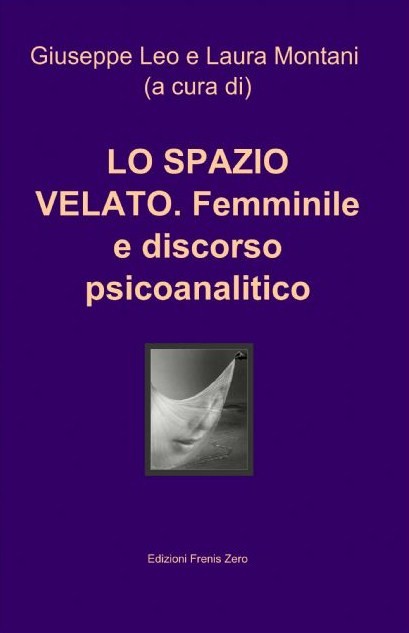
Writings by: A.
Cusin, J. Kristeva, A. Loncan, S. Marino, B.
Massimilla, L. Montani, A. Nunziante Cesaro, S.
Parrello, M. Sommantico, G. Stanziano, L.
Tarantini, A. Zurolo.
Editore/Publisher: Edizioni Frenis Zero
Collana: Confini della psicoanalisi
Anno/Year: 2012
Pagine/Pages: 382
ISBN: 978-88-903710-6-6
Prezzo/Price: € 39,00
Click
here to order the book
AA.VV., Psychoanalysis
and its Borders, a cura di
G. Leo (Editor)

Writings by: J. Altounian, P.
Fonagy, G.O. Gabbard, J.S. Grotstein, R.D. Hinshelwood, J.P.
Jimenez, O.F. Kernberg, S. Resnik.
Editore/Publisher: Edizioni Frenis Zero
Collana/Collection: Borders of Psychoanalysis
Anno/Year: 2012
Pagine/Pages: 348
ISBN: 978-88-974790-2-4
Prezzo/Price: € 19,00
Click
here to order the book
AA.VV.,
"Psicoanalisi e luoghi della negazione", a cura di A.
Cusin e G. Leo

Writings by:J.
Altounian, S. Amati Sas, M. e M. Avakian, W. A.
Cusin, N. Janigro, G. Leo, B. E. Litowitz, S. Resnik, A.
Sabatini Scalmati, G. Schneider, M. Šebek,
F. Sironi, L. Tarantini.
Editore/Publisher: Edizioni Frenis Zero
Collana/Collection: Id-entità mediterranee
Anno/Year: 2011
Pagine/Pages: 400
ISBN: 978-88-903710-4-2
Prezzo/Price: € 38,00
Click
here to order the book
"The Voyage Out" by Virginia
Woolf

Editore/Publisher: Edizioni Frenis Zero
ISBN: 978-88-97479-01-7
Anno/Year: 2011
Pages: 672
Prezzo/Price: € 25,00
Click
here to order the book
"Psicologia
dell'antisemitismo" di Imre Hermann
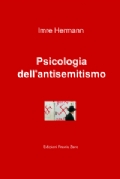
Author:Imre Hermann
Editore/Publisher: Edizioni Frenis Zero
ISBN: 978-88-903710-3-5
Anno/Year: 2011
Pages: 158
Prezzo/Price: € 18,00
Click
here to order the book
"Id-entità mediterranee.
Psicoanalisi e luoghi della memoria" a cura di Giuseppe Leo
(editor)
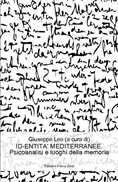
Writings by: J.
Altounian, S. Amati Sas, M. Avakian, W. Bohleber, M. Breccia, A.
Coen, A. Cusin, G. Dana, J. Deutsch, S. Fizzarotti Selvaggi, Y.
Gampel, H. Halberstadt-Freud, N. Janigro, R. Kaës, G. Leo, M.
Maisetti, F. Mazzei, M. Ritter, C. Trono, S. Varvin e H.-J. Wirth
Editore/Publisher: Edizioni Frenis Zero
ISBN: 978-88-903710-2-8
Anno/Year: 2010
Pages: 520
Prezzo/Price: € 41,00
Click
here to have a preview
Click
here to order the book
"Vite soffiate. I vinti della
psicoanalisi" di Giuseppe Leo
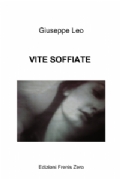
Editore/Publisher: Edizioni Frenis Zero
Edizione: 2a
ISBN: 978-88-903710-5-9
Anno/Year: 2011
Prezzo/Price: € 34,00
Click
here to order the book
"La Psicoanalisi e i suoi
confini" edited by Giuseppe Leo
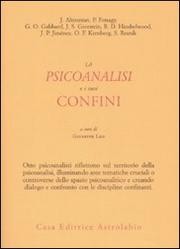
Writings by: J.
Altounian, P. Fonagy, G.O. Gabbard, J.S. Grotstein, R.D.
Hinshelwood, J.P. Jiménez, O.F. Kernberg, S. Resnik
Editore/Publisher: Astrolabio Ubaldini
ISBN: 978-88-340155-7-5
Anno/Year: 2009
Pages: 224
Prezzo/Price: € 20,00
"La Psicoanalisi. Intrecci Paesaggi
Confini"
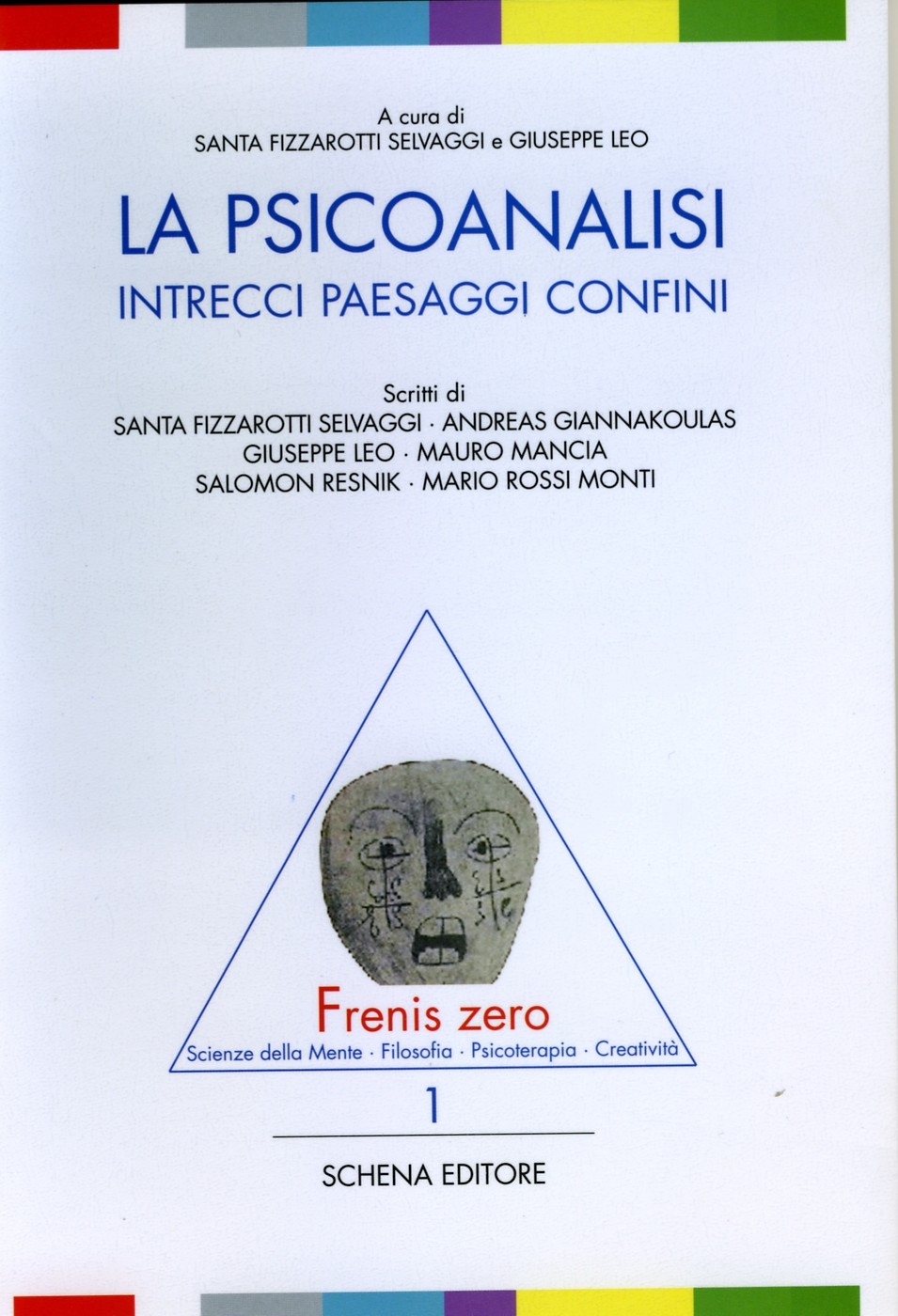
Edited by S. Fizzarotti Selvaggi, G.Leo.
Writings by: Salomon Resnik, Mauro Mancia, Andreas Giannakoulas,
Mario Rossi Monti, Santa Fizzarotti Selvaggi, Giuseppe Leo.
Publisher: Schena Editore
ISBN 88-8229-567-2
Price: € 15,00
Click here to order the
book |
Introduction
It is well-known that the phrase “talking cure” 2
has originated from
psychoanalysis,
and now “talking therapy” is a term widely used in
public discourses. In relation to
talking ,
mindfulness practice could be characterised as aiming at releasing the
practitioner from the bondage of concepts and words,
thereby rendering talking
unnecessary, whereas psychoanalysis, as the original
talking therapy, is “full of
words” so to speak. Does that mean they are
diametrically opposite? To pursue this
question, it is useful to consider the idea of silence
and listening in the practice of
both disciplines.
Sara Maitland, in her remarkable work A
Book of Silence, has said
the following:
<<Psychoanalysts (and other therapists)… create and
hold the free silence in which
the subjects of the process may struggle to name
themselves... During my brief
brush with psychoanalysis in the 1980s I myself never
encountered this liberating
silence …
Despite this caveat, the capacity to create such a listening
silence is a
strange and beautiful thing. So many people, when I
have asked them about
positive experiences of silence, have mentioned this
psychoanalytic silence...>>
(Maitland, 2008, p. 248, emphasis
added)
Maitland describes psychoanalytic silence as a listening
silence or liberating
silence.
Many analysts would agree that such silence is part of
the analytic concept of “evenly
hovering attention” which Freud recommends. In the
case of mindfulness, silence is
central to its practice, as staying in the present
with an unoccupied mind requires a
wordless listening that encompasses all that there is,
leading to an experience of inner
liberation3.
Thus the two disciplines may
have an affinity for one another.
“Through silence we speak” 4
― this
phrase captures vividly the immense potential of
silence in the context of psychotherapy. While it is
not my intention to review the
literature on silence in psychotherapy5,
it is useful to mention a
classic paper by a
colleague of Freud, Theodor Reik (1927/1968), who has
discussed the psychological
meaning of a patient’s silence. To Reik, silences
during therapy are emotionally
significant and
waiting
in silence is far more
important a task for the therapist than
filling the session with words.
Silence and the meditative stance enable the therapist
to speak, when
appropriate,
from a truly listening frame. Echoing Freud’s evenly
hovering attention, the British
analyst Nina Coltart has described her style of work
as follows:
<<Bare attention has a sort of purity about it... It’s
that you simply become better, as
any good analyst knows, at concentrating more and more
directly, more purely, on
what’s going on in a session. You come to
concentrate more and more fully on this
person who’s with you here and now, and on what it
is they experience with you; to
the point that many sessions become similar to
meditations>>. (Coltart, 1998, p. 176)
Coltart has described such attention as “uncluttered”
― she
does not say much but
holds her thought processes in suspension while
closely attending to the patient. The
invocation of
meditation,
without specifically bringing in Buddhist philosophy, is
probably what many psychotherapists have been doing
for a long time.
In the rest of the paper, I will discuss a number of
publications about evenly hovering
attention and also about mindfulness, and explore the
mutual affinities between the
two. While inevitably this will not be an exhaustive
review of all the relevant issues, I
hope my exploration would provide useful signposts for
the interested reader.
Talking and Listening
Talking is essential to the practice of psychotherapy,
but it is not simply a matter of
words being uttered. Fundamentally, it is a state of
communion
between partners in
conversation
―
it constitutes a presence
that involves the whole of
the participants’
being. Bromberg (1994) declares that, in
psychoanalysis, speaking is “not simply a
process of delivering content. It is also a relational
act that shapes the content of what
is spoken about” (p. 524). He refers to the
imperative attributed to Socrates ―
“Speak! That I may
see
you!” ―
as central to psychotherapy.
Speaking (and listening)
is not information exchange, but a revelation (a
presenting)
of the self.
Consciousness is always a now
experience, a “this-moment”
state of mind. Working
within the psychotherapeutic frame entails a
lingering
in the present ―
to be here,
and
with
this person. Presence is a
quality of being felt by the other, of fully
inhabiting this
now
moment, and of showing (presenting)
the self. Crucially, it gives
time to the partner in conversation: a sense of
waiting, respecting the rhythm of what
is unfolding, with a tentativeness that offers space,
both temporal and imaginative, for
the emergence of what is important. Speaking does not
have to happen continuously
―
the
silence of waiting, as much as words, is part and parcel of presence.
To be open to novel possibilities in this fully
present manner requires a depth of
listening that the psychotherapist has to
learn
to achieve. But listening
has become
neglected in healthcare environments where the concept
of “managed care” has
become hegemonic. Graybar & Leonard (2005) comment
that during difficult
moments in therapy, it is tempting for all therapists,
whether experienced and
inexperienced, “to bypass such discomfort by letting
go of listening and giving in to
the reflex to speak, advise, or lecture” (p. 14).
Graybar and Leonard argue that the ubiquity of drug
therapies and the popularity of
brief, manualised “empirically-supported treatments”
(ESTs) have together subverted
the practice of proper listening in mental healthcare.
Although the quality of the
therapeutic relationship (rather than specific therapy
techniques or “ingredients”) is
the best predictor of therapy outcomes6,
managers are convinced that
quick
(programmed), cost-effective (cheap),
technique-oriented (manualised) treatments for
psychological distress are the only option, in a
cultural context where speed and
technology trump everything else. While this trend,
which has more to do with
“business” than “care”, is most dominant in
the United States, it is clearly gaining
traction in the UK.
Within the “managed care” model, the kind of
psychotherapeutic listening, where the
therapist’s own assumptions are suspended, her
attention finely tuned to the patient’s
(unconscious) narrative, and the latter’s (sometimes
tortuous) revelation accepted with
openness, where the patient’s experiences count, and
where the therapist is not the
“boss” but a fellow-traveller, has often been
summarily dismissed as unnecessary
luxury.
Free Association and Evenly Hovering Attention
To counter the decline of listening in psychotherapy,
it would be instructive to go
back to Freud’s recommendation of “impartially
suspended attention”, which he sees
as the analytic stance that psychoanalysts should
adopt7.
Most therapists, even outside of psychoanalysis, know
that free association is the
fundamental rule for the patient in analysis: she has
to say whatever comes to mind
without holding back. The other side of the free
association coin is evenly hovering
attention, which can be characterised as the analyst’s
free association that enables her
to catch the drift of the patient’s
unconscious8.
Thus the freely proffered
thoughts,
gestures, feelings, memories, dreams, questions,
tangents, ravings, grimaces,
mumblings, etc from the patient are met with a
completely open and accepting
attitude on the part of the listening analyst.
Analysis,
in the sense of bringing
(interpretative) coherence to the patient’s story,
takes place when the analyst reflects
on the session (or on the whole analysis) afterwards.
In Freud’s own words,
psychoanalytic attention “rejects all aids, even
note-taking, and consists simply of not
focusing on anything in particular, but giving
everything the same kind of ‘impartially
suspended attention’” (Freud, 1912/2002, p. 33).
Mark Epstein (1984) comments that such attention is
not passive or allowing the mind
to wander, but “to give ‘equal notice’ to every
object of awareness for hours at a
time” (p. 195). In his view, “[e]venly suspended
attention has received curiously little
attention from the analytic community over the years”
(p. 197). But in fact there are a
number of early psychoanalysts who have discussed the
concept at length or made
attempt to develop it further. For example, Wilfred
Bion (1967), a British
psychoanalyst, has formulated the concept of “without
memory and desire” as the
analytic listening frame (see next section), and
Theodor Reik (1948) has developed
the idea of
listening
with the third ear as an
extension of Freud’s analytic attention9.
The focus of Reik’s book
Listening
with the Third Ear10
is to “investigate the
unconscious processes of the psychoanalyst himself”
(Reik, 1948, p. x). However,
Epstein (1984) disagrees with Reik’s “searchlight”
metaphor. He comments that this
metaphor has the connotation of
selective
attention (searching) which
is counter to
Freud’s evenly hovering attention. To Epstein,
Buddhist meditation is closer to what
Freud has described.
Another concept, “analytic neutrality” (or the
principle of “abstinence”), is also
related to the idea of evenly hovering attention.
Psychoanalysts have debated about
whether neutrality is too passive and therefore
off-putting to patients. While
cautioning against aloofness, remoteness, blankness
and anonymity (likely to be
experienced as persecuting), Greenberg (1986) believes
that neutrality is “the ideal
atmosphere within the context of a particular
understanding of the analytic process,
one in which
self-knowledge
is the goal” (p. 81). In this regard, holding evenly
hovering attention is an expression of neutrality, and
is essential for helping the
analysand achieve self-knowledge. However, Greenberg
is aware that the analyst
adopting a neutral stance does not mean she is
not
influencing the patient11.
Although
he acknowledges that the analyst influencing the
analytic process is unavoidable, he
argues that neutrality (quiet attentiveness)
constitutes a beneficial
(therefore
acceptable) form of influence.
While evenly hovering attention is seen as an attitude
expressing openness, receptivity
and presence, it is not without its detractors. In
Sándor Ferenczi’s Clinical
Diary, his
first entry (dated 7 January 1932) contains a strong
criticism against the “so-called
free-floating attention, which ultimately amounts to
no attention at all, and which is
certainly inadequate to the highly emotional character
of the analysand’s
communications, often brought out only with the
greatest difficulty” (Ferenczi, 1988,
p. 1). This was Ferenczi’s veiled attack on Freud
himself, implying that the latter was
an
insensitive
analyst hiding behind the
front of free-floating attention12.
Despite Ferenczi’s criticism, it should not be
impossible for a therapist to hold on to a
truly receptive listening attitude with sincere and
warm engagement with the patient.
Such attention does not have to be a passive attitude
that conveys indifference,
distancing or boredom. The important thing is how to
cultivate an honest openness
that sustains genuine relating. The work of Peter
Lomas (1981, 1994 and 1999) is a
good illustration of sensitive analytic
practice.
Looking from another angle, evenly suspended
psychoanalytic listening is based on
what Reik’s has described as “social sense” and
“rhythmic sensitivity” which jointly
determine “the right moment to communicate an
interpretation” (Arnold, 2006, p.
755). The German word Reik has used is
Takt
which means both “rhythm”
and
“social tact”. To Reik,
timing
is of crucial importance and
he has talked about
grasping “the psychological moment” guided by
Takt.
In listening, the
psychotherapist has to be
tactful
and be able to follow
the rhythm of the
therapeutic
process. In Reik’s words, this is listening with the
“third ear” ―
a way of staying in
the present, often in silence, and yet closely aligned
with psychological time13.
The British literary critic James Wood suggests that
“novelists and readers must
develop their own third ears” and
<<read
musically,
testing the precision and rhythm of a sentence, listening for the almost inaudible rustle of historical association
clinging to the hems of modern
words, attending to patterns, repetitions, echoes,
deciding why a metaphor is
successful and another is not, judging how the perfect
placement of the right verb
or adjective seals a sentence with mathematical
finality>>. (Wood, 2008, p. 137-138,
emphasis
added)
Although Wood is talking about literature, I would
suggest that this passage can serve
as an apposite description of Reik’s “third-ear
listening” that should underpin
psychotherapeutic
practice.
Without Memory and Desire
Taking Freud’s evenly hovering attention seriously,
Bion (1967) famously talked
about the need to discard memory and desire when
starting each and every analytic
session. It is Bion’s belief that “[p]sychoanalytic
‘observation’ is concerned neither
with what has happened nor with what is going to
happen but with what is
happening”
(Bion, 1967, p. 272). What happens
now
in the session is the focus,
and so “[e]very
session attended by the psychoanalyst must have no
history and no future” (p. 272).
This rule of “without memory and desire” will
facilitate the evolution of something
significant out of the “darkness and formlessness”
of the session. Bion’s dictum
echoes Freud’s view that “if you follow your
expectations, you run the risk of never
finding out anything you do not know already; if you
follow your inclinations, then
you are bound to distort whatever you perceive” (Freud,
1912/2002, p. 34).
However, keeping a completely empty
mind is impossible. The
issue of memory is not
a trivial one. In Freud’s
Advice
to Doctors on Psychoanalytic Treatment (1912/2002),
he said note-taking should not be carried out during
the session (presumably it could
be done afterwards); he also cautioned against
engaging in “research” or “scientific”
work during treatment
―
such work is only allowed after
the completion of
the case.
The analyst should proceed as if she has no
plan/agenda in mind. But is this really
feasible?
There are two problems here. Freud’s “scientific
research” consists only of his case
studies, and this work represents his theory-building
effort. But how are research data
to be collected
―
simply by the analyst’s subsequent
recollection? Is the analyst
able
to trust her ability to retain
all
the important information
without distortion through
months (if not years) of therapy? If she does write
notes after each session, should she
not read them while treatment is ongoing? If the rule
is to have no plan (without
memory and desire), perhaps the analyst should not
write any notes until after the
completion of the case? But “completion” probably
means the analyst has already
arrived at a conclusion or formulation about the
patient’s problem. As Freud has
written up his cases in a way that conforms to his
ideas, they are “data” that would
inevitably confirm his beliefs. Thus his “research”
involves a circularity that is not a
rigorous testing of his theory.
The other problem is, if the analyst does write notes
after each session,
and does read
them, is it possible to stop hypotheses from forming
in her mind during sessions? Is
“without memory and desire” humanly possible? If
psychoanalysis has made any
contribution to human understanding, it is its focus
on the unconscious aspect of
mental
life14.
In this regard, the reflexive
question is how an analyst could be sure her
unconscious has not led her in a particular (perhaps
erroneous) direction if she does
consult her (subjective) notes before a
session.
It is important to say here that Bion’s stipulation
of without memory and desire, like
Freud’s evenly hovering attention, must not become
an excuse for sloppy work.
Hooke (no date) usefully suggests that Bion’s rule
is paradoxical and
not literal. It has
more to do with the analyst’s “complete
availability and openness to the patient”
(Hooke, n.d., p. 7) rather than abdicating her
responsibility to hold things in mind
(i.e., to
remember).
Both Freud and Bion have remarked that their
respective recommendation is distilled
from extensive practice. But as Hooke has pointed out,
“what happens in the
consulting room and what is theorized and gets written
is often different” (Hooke,
n.d., p. 7). Indeed, reading Freud’s cases does not
always give the impression of him
showing neutrality, openness and receptivity; rather,
he always resolutely brings his
theory to bear on his patient in the analytic
session15.
Every psychotherapist has to
honestly tackle the risk of her preconceived ideas
influencing therapy negatively. In
doing so, reflexivity and
negative
capability are
indispensable.
Negative Capability
While acknowledging the importance of Freud’s
recommendation, Robert Hobson
(1985), a British psychotherapist from the Jungian
tradition, has highlighted the
importance of
negative
capability that therapists
should cultivate. This is a concept
borrowed from the poet John Keats, which signifies the
capacity to stay with
uncertainties, mysteries and doubts without any “irritable
reaching for fact or reason”.
It is plausible to suggest that such openness is the
prerequisite for genuine evenly
hovering attention. Negative capability is also what
Bion has recommended, not only
as a discipline for therapeutic listening, but as the
analyst’s way of
life (Symington &
Symington, 1996, p. 169).
However, negative capability does not mean not working
hard. The active nature of
evenly hovering attention is clarified in Hobson’s
(1985) description of how the
therapist’s attention should be receptive of the “minute
particulars” that emerge in the
session. Hobson has developed the concept of “aloneness-togetherness”
which
characterises the clinical encounter as one where the
therapist is alone within her own
world of reverie but is
at
the same time together with
and responsive to the patient16.
In a recent article in the British Psychoanalytic
Council newsletter, Kernberg (2014)
has sounded a
warning:
<<There is a naïve assumption that the analyst
listening with evenly suspended
attention, or with an effort to enter each session ‘without
memory or desire’, open
to reverie on the patient’s material, will provide
the essential and exclusive
precondition on which psychoanalytic understanding and
interpretation are based. I
believe that this assumption is a bias derived from a
lack of understanding of what a
clear and precise technical approach means>>. (Kernberg,
2014, p. 11)
What Kernberg is saying here is that maintaining an
evenly hovering attention is
necessary but not sufficient; there is a need to
develop a more sophisticated
framework to enhance the
disciplined
skills-training of analysts.
Perhaps one useful
framework to consider is Patrick Casement’s idea of
the “internal supervisor” (see,
e.g.,
Casement, 1985), which has the potential of
being adopted by, and adapted for, a
range of psychotherapeutic
approaches17.
A Word about Words
Freud has used the metaphor of the analyst as a
telephone receiver to describe
impartially suspended attention (Freud, 1912/2002, p.
37). This has been criticised by
a number of analysts. For example, Filip Geerardyn
(2002) has pointed out that
telephony involves the encoding of an already fixed
message, which is then
electrically transmitted, and finally decoded by the
telephone receiver according to a
set of predetermined parameters, whereas in analysis
meaning is fluid, not pre-fixed,
but emerges in the context of communication, and more
than likely emerging
differently
for
the patient and the analyst.
Similarly, Fred Griffin (2016) 18
rejects Freud’s telephone
receiver metaphor as too
passive, and has stated that “psychoanalytic
listening involves acts of sensibility,
engagement and imagination” (p. 3). He construes the
analytic subject not
as hidden
inside the analysand’s psyche, but as being
constantly created, intersubjectively,
within the flux of the transference-countertransference
matrix. He believes that
analysts tend to resort to “content-driven
theoretical models” or “impoverished
fictions” in times of clinical impasse or confusion,
which lead to reductive
interpretations. Griffin suggests that analysts should
learn from good literature,
particularly the novel, where close reading of the “dimensional
universes of human
experience” offers the practitioner the much needed
sensibility
training.
The views propounded by Griffin and Geerardyn are more
in tune with respect for the
unknowability
of
the human person. To ponder further on Griffin’s point about “acts
of sensibility, engagement and imagination”, it is
relevant to consider what the
Jungian analyst Barry Proner has said in his aptly
titled essay “A word about words”.
Proner (2006) presents a view that the active task of
evenly hovering attention has to
do with listening to
words,
both the patient’s and the analyst’s own. But it is
important to attend to the
vicissitude
of words: “Words both
unite and separate. They
can be both symbolic and concrete at the same time”
(Proner, 2006, p.432). He
believes that patients are looking for words to anchor
experiences that are often
ineffable or inchoate, and thus “giving a
name
to the powerful emotional
experience
that is not yet mentally represented” (p. 430). This
is how Griffin has characterised
the
active
nature of evenly hovering
attention:
<<When I am working well and I am in what Freud called
‘evenly hovering attention’
and Bion called ‘reverie’, I can listen most
deeply and unconscious meanings are
more accessible.
Words
can stand out that in
another context or at another time may
have no more than ordinary or trivial significance>>. (Griffin,
2016, p. 426, emphasis
added)
In this context, it is puzzling to find theorists who
have interpreted Freud’s or Bion’s
recommendation in rather mystifying ways. For example,
the Lacanian analyst Bruce
Fink (2007) remarks that evenly hovering attention is
“to hear without
understanding”, without doing anything or imposing
any meaning to the “ribbon of
sound” produced by the patient (p. 12 and p. 21).
One wonders how therapy could
proceed on the basis of
ribbons
of sound? Such negation of
words is unhelpful to say
the
least.
However, there is one thing I would debate with
Griffin. In his paper, he has alluded
to the importance of finding the “right word”. I
am not sure if it is possible, or
desirable, to be definitive about what the
right
word is. I would argue it is
important
always to be tentative: the “right word” might be
right one moment, but “not-right”
the next. The certainty one achieves today may easily
be overturned by what happens
tomorrow. Transience or impermanence is a fact of
existence. This is the Buddhist
insight that psychoanalysis should learn
from.
Buddhism and Mindfulness
In its origin, Buddhism was a philosophy of life
rather than a religion. As Safran
(2003b) has pointed out, metaphysical and cosmological
speculations are irrelevant to
Buddhist philosophy. It is not an ontological theory;
its aim is to relieve human
suffering. The Buddhist idea of impermanence (emptiness
or nothingness) is about
seeing through the transience and changeability of
life, not a metaphysical declaration
regarding the origin or essence of existence. Thus
Buddhist insights are about how
to
live .
Whether ontologically there is any substance to anything is not of
great concern.
Existence as such is phenomenologically accepted, and
the task is to “get on with it”.
In this sense, Buddhism does not reject a realist
model of the world. Buddhist ethics
has to do with accumulating “virtuous conduct”,
which entails actions (of goodness)
in the real, physical world. This forms the basis for
moral virtues such as compassion,
which many contemporary psychotherapists have espoused
in their practice,
particularly those influenced by
Buddhism.
The Buddhist idea of learning to see through the
impermanence of all that exists is an
important one
―
it encourages a temperament that
is not fixated on “Truth”. This is
what psychoanalysis should embrace: it is not a matter
of the truth of
analytic
interpretations that is important, it is their
usefulness (or otherwise) in helping the
patient live a good life that
counts19.
Thus, psychoanalysis is an
ethical practice, not a
“scientific” one as narrowly conceived. In German
(Freud’s working language), the
word for “science” ( Wissenschaft)
is the same as that for “knowledge”, with a much
wider range of meaning. The Latin root of “science”
is to know (“scientia”),
which is
far from the mechanistic, laboratory connotations that
the word conjures up in many
people’s mind in the English-speaking world. An
ethical practice has to be based on
how and what we
know
about the world (based on
“science”), even if such knowledge
is incomplete, approximate, tentative or even
defective. It is in this wider context of
“science” that psychoanalysis might converge with
Buddhism.
Understood as a practical philosophy, the conundrums
within Buddhist thinking ―
the idea of “no-self-ness”, “emptiness”, or
the world as illusory ―
are easier to grasp.
Quoting the well-know declaration of Harvard
psychotherapist Jack Engler, the
Slovenian analyst Borut
Škodlar
(2016) said “you have to be somebody before you
can be nobody” (p. 128). This is one way of
resolving the paradox of “no-self-ness”.
Even though the world is concretely there and
suffering is real, we can, and have to,
live
as
if they are but empty. This
is what Buddha believes to be the basis for
transcending suffering. To be “somebody but also
nobody” does not remove the
person from
participating
in the world. Zen teaching
is particularly this-worldly
and is
not trapped in any ontological maze. I believe it is
Zen that would most benefit the
practice of
psychotherapy20.
Most readers know that mindfulness practice is a
discipline of staying with the
present, dwelling in silence, and paying attention to
all that there is with curiosity and
an open and non-judgemental attitude. The rhythm of
breathing is used as an anchor
to help the practitioner stay with
now
and let go of thinking.
Simply noticing and
accepting (even of the practitioner’s own wandering
mind) is all that is required. This
description, though cursory, already suggests an
affinity between mindfulness and
Freud’s evenly hovering attention or Bion’s
no-memory-no-desire reverie.
Like psychoanalysts, mindfulness practitioners place
great emphasis on the idea of
neutrality, albeit with a different nuance. In
meditation, being neutral and detached
means the practice is not about success or failure, or
striving to achieve anything, but
simply staying with a moment-by-moment awareness.
There is no duality of body and
mind (e.g., the physical practice of archery is also a
practice of the mind); and no
duality between the mind and the world ( I
am the arrow). As such,
mindfulness
becomes
second
nature: as the stream of my consciousness, as my being. This
experience of “now” is an
indwelling
in the world unique to human
subjectivity21.
There are many questions about mindfulness practice
still being debated. Is it possible
to be “just noticing” and nothing else? What does
noticing mean anyway?
Isn’t
noticing a form of
thinking?
But isn’t there an understanding of meditation as “notthinking”?
How can this paradox be resolved? Is it possible to
achieve a completely
uncluttered mind? Can we ever suspend judgement
totally, or is it not the case that
being conscious means making judgement (moral or
otherwise) all the time? These
questions can also be directed at the psychoanalytic
idea of no-memory-no-desire or
evenly hovering attention. They reflect a commonality
between the two.
Furthermore, there is a paradox about the non-striving
attitude of mindfulness: if we
stop striving altogether, what does
disciplined
meditative practice entail?
Doesn’t
such practice require effort
―
a form of striving towards an
end? Another paradox: Is
mindfulness a language-based practice? Think of what
mindfulness teachers are doing
when leading a meditative exercise
―
words are
used to capture and hold the
attention of the practitioners. Would these words trap
the mind, thus negating the idea
of emptying the mind? These questions are not raised
to reject mindfulness, but to
widen the horizon for
exploration.
It is important to say that neither Buddhism nor
mindfulness practice is anti-rational.
As the Bodhidharma has said, “Many roads lead to the
Path, but basically there are
only two: reason and practice” (Bodhidharma, 1987,
p. 3). Both reason and practice
are part of the Buddhist
discipline
of life: “Buddha
means awareness, the
awareness
of body and mind that prevent evil from arising in
either. And to invoke means to call
to mind, to call constantly to mind the rules of
discipline and to follow them with all
your might” (Bodhidharma, 1987, p. 111). On this
basis, it is not unreasonable to say
that mindfulness does involve subjectivity (the
phenomenal experience of the “I”) in
the context of striving in a particular direction (“invoking
rules of discipline”).
What mindfulness can learn from psychoanalysis is the
acknowledgement of the
unconscious
―
that the mind has a depth which
is more than we are able to fathom22.
The significance of the unconscious dimension of human
experience cannot be
ignored. To that extent, to
empty
the mind is not a task that
can ever be achieved, and
mindful attentiveness is never an act always under the
conscious control of the person.
Such understanding may help to alleviate a
practitioner’s sense of failure of not
achieving complete blankness of the mind. More
importantly, such acknowledgement
may also help the mindfulness community learn to
tackle some of the meditationrelated
(sometimes severe) psychic or emotional difficulties
that practitioners might
encounter.
One danger, as I see it, is that mindfulness has not
only become a popular therapy
modality, but also a burgeoning enterprise that has
entered into mainstream society, in
healthcare, schools, public institutions or the
business and management world, almost
as a panacea for all ills (e.g., see Crane 2017). It
is important to see mindfulness as a
reflexive and reflective way of life rather than a
technique. When
something becomes
a therapy technology or a brand of merchandise, and
is
packaged and put on sale,
there is a high probability that it would become
corrupted23.
The interest psychoanalysts have shown toward Buddhism
or meditation is not new.
There is a considerable literature which this paper
will not have space to address,
ranging from Carl Jung’s or Erich Fromm’s
well-known texts (Jung, 1978; Suzuki,
Fromm & de Martino, 1960), to more recent studies
by various analysts (e.g.,
Falkenström, 2003; Leone, 1995; Lin & Seiden,
2014; Mace, 2008; Makise, 2017;
Moncayo, 2012; Safran, 2003a; Suler, 1995;
Young-Eisendrath & Muramoto 2002).
Some of these works are not particularly helpful, such
as Makise (2017) or Moncayo
(2012), with inaccessible theoretical baggage couched
in esoteric (Lacanian)
language.
In the cognitive-behaviour therapy tradition (CBT),
mindfulness has also had great
impact, as can be seen in publications ranging from
the popular text Mindfulness-
Based Cognitive Therapy for Depression
(Segal,
Williams & Teasdale, 2002), to
Compassion-Focussed Therapy (e.g., Gilbert, 2009),
Dialectical Behaviour Therapy
(e.g.,
Linehan, 1993), or Acceptance and Commitment
Therapy (e.g., Hayes, 2002;
Hayes et al., 2006). Of course mindfulness has
attracted other therapists as well,
including the somatic or body-oriented psychotherapies
(e.g., Weiss, 2009) and
Emotion-Focused Therapy (Geller &
Greenberg,
2012).
In this context, Škodlar’s
question is of interest: “Where in the landscape of
psychotherapy would be an appropriate place for
mindfulness? Is cognitive-behavior
therapy (CBT) really the most suitable area within
which to locate a mindfulness-oriented
approach?” ( Škodlar,
2016, p. 126).
Š kodlar’s
answer is that mindfulness has the most affinity with existentialist
or
phenomenological psychotherapy. He says, “one cannot
think of many more suitable
adjectives to add to mindfulness than existential, and
it is certainly more appropriate
than cognitive, analytic or systemic” ( Škodlar,
2016, p. 128). That, unfortunately, runs
the risk of turning mindfulness into a specific brand
rather than acknowledging it as
the fundamental attitude (or way of being) that all
psychotherapists should cultivate.
The Tango of Psychoanalysis with Mindfulness
One area of discussion, in terms of the rapprochement
between psychoanalysis and
mindfulness, is the question of what the “self” is
and how Buddhism and
psychoanalysis converge or diverge in this respect (see,
e.g., Falkenström, 2003 or
Sular, 1995). Usually the attempt is to postulate
various structures of the self (core
self,
self-structure, selfobject, the observing self,
etc), and compare and contrast how
Buddhist ideas and psychoanalytic theories might come
together in this respect.
However, such discussion often gets lost in a
theoretical labyrinth that is not helpful
to practitioners. Falkenström’s (2003) attempt to
resolve the contradiction between
the psychoanalytic concept of self and the Buddhist
idea of “no-self-ness” fails
because, in my view, a structural model of the self
does not do justice to
lived
experience. To me, the “self” is a way of speaking
about the experiencing of
subjectivity
―
it is in the practical living in
and amongst people, in interactions and
mutual interrogations that the self becomes
meaningful.
To think of the self in terms
of the
contents
of the mind (mental
representations, hierarchical differentiation within
the self-system, etc) reifies the dynamic, phenomenal
experiencing of being a
(material)
subject.
Theorising about the self as a system of mental
representations, like what Falkenström
has done, does not chime with the Buddhist sense of
“no-self-ness”, which is pointing
to the ineffable, non-structural nature of
subjectivity. While Falkenström has
expressed doubt about the concept of the “self”,
he still gets muddled in trying to
explain his idea. Just take one of his propositions:
“When the individual has identified
with part of experience as ‘self’, there will
inevitably be threats to this self…”
(Falkenström, 2003, p. 9). One wonders who (or what)
the “individual” is, and
whether this “individual” already exists
prior
to, and separately
from the “self” that
appears later on in the sentence. Or perhaps
Falkenström is saying that “experience”
constitutes (becomes) the self which the individual
then identifies with? But does this
dualism make
sense?
Many psychoanalysts are more concerned about the
therapeutic aspects of
mindfulness than theories about the self. Kathleen
Speeth (1982) discusses the
importance for the psychotherapist to maintain both
focused and panoramic attention
“in both direction” (i.e., to herself and to the
other person), and refers to meditation
techniques of various Eastern traditions, including
Zen practice. In her view, Freud’s
evenly hovering attention represents panoramic
attention, which resonates with
mindfulness. She has also coined the phrase “witness
consciousness” (p. 155) ―
similar to Casement’s (1985) “internal supervisor”
― which
could be construed as
meta-level observation essential for keeping a
detached view of the therapeutic
process.
While many therapists have espoused mindfulness
practice as therapy tool, some go
further and commit themselves to a Buddhist way of
life ― the
late Jeremy Safran, a
widely respected Canadian-born but New York-based
psychoanalyst was one of
the m24.
In reviewing Safran’s 2012
text Psychoanalysis
and Psychoanalytic
Therapies ,
British psychotherapist Jeremy Holmes remarks on the importance of
Safran’s commitment to Buddhism:
<<[T]he book is permeated by Safran’s Buddhist
background. He discusses the
tension between the meliorist American dream of
unlimited possibility of psychic
change and unbounded optimism, with Freud’s rational
pessimism and stoicism.
From a Buddhist perspective, the paradox is that the
more one can come to accept
oneself and the world as it is, the more one is in a
position to change both>>. (Holmes,
2013, p. 103)
Pessimism and stoicism are seen here as conducive to
the development of resilience,
and this echoes what Lin & Seiden (2014) say about
psychoanalysis and Buddhist
mindfulness philosophy as “the
turning
toward distress rather than
turning away from
it” (p. 4). That is, both perspectives are regarded
as being honest in their acceptance of
the reality of suffering in the world. The Buddhist
practice of “no-self-ness” is what
analysts like Safran believe to be an effective means
for coping with inevitable
suffering. This is not a denial of existence, but a
way of grasping its transience. As
van Waning (2002) has said: “The Buddha did not say,
‘You don’t exist,’ but rather,
‘You have no self.’ His point was not to deny or
reject the self, but to recognize the
self-representation as
representation,
as a concept without
existence of its own”. (p.
93)
To embrace the paradox of transience, it would be
incumbent on us to acknowledge
that
we
know, and yet we know we don’t know.
This is radical openness (similar to
negative capability
discussed
above). It is a paradoxicality that sets us free. To quote
Safran:
In Buddhist constructivism, the primary thrust is to
cultivate a radical sense of
openness. The belief is that concepts enslave us and
that the tendency toward
reification creates suffering. The emphasis is not on
constructing adaptive
narratives but rather on the radical deconstruction of
all narratives. It is interesting
to note that this emphasis on radical openness is
similar in some respects to the
growing awareness in analytic thinking of the
importance of the analyst’s openness
and tolerance of ambiguity. (Safran, 2003b, p. 22)
Perhaps Freud was enslaved by his
craving
to be right, and this had
blinkered him.
Within the Buddhist perspective, craving is the source
of suffering as it leads to
illusions. What psychoanalysts can learn from Buddhism
or mindfulness practice is,
as Safran has suggested, to give up such craving and
embrace radical openness.
Letting go of concepts that shackle intelligence,
theories that diminish horizon and
fixed self-identifies that restrict imagination may
yet provide psychoanalysis with an
opportunity for renewal. Embracing impermanence and
emptiness ― this
will be
psychoanalysis in a mindfulness
frame.
Mindfulness, Psychoanalysis and Mentalisation
It is not uncommon to find inexperienced therapists
confusing mindfulness with
mentalisation .
The latter is a relatively recent development within the psychodynamic
tradition, originally with a specific focus on working
with people struggling with
borderline personality difficulties. Anthony Bateman
and Peter Fonagy (2004, 2006),
two London-based psychoanalytically trained
psychotherapists, have pioneered this
approach. At the beginning, Bateman and Fonagy said
mentalisation is “a focus
for
therapy rather than a specific therapy in itself”
(2006, p.159) ― it
is what all good
therapy should be like. Sadly, like much else in the
psychotherapy world,
mentalisation has now become packaged and widely
advertised in the therapy
“market-place”.
This is not an appropriate place to go into a lengthy
exposition of the mentalisation
perspective; suffice it to say it is a therapeutic
framework based on the concept of
“mind-mindedness”. Or, to put it simply, it is a
style of working that constantly
attends to what is happening in a person’s
mind25.
The therapist is not only
focusing
on understanding the thinking, reasoning or feeling of
the patient, but most
importantly, on how the latter attributes motives or
intention to other people’s
actions.
Furthermore, the therapist is trying to foster the
same reflective
capacity in the patient
so that the latter can gradually learn to grasp the
mind of others (hence “mindmindedness”).
Thus mentalisation is about “keeping mind in mind”
(own mind and others’ minds),
not making up the mind too quickly (keeping an open
mind or “not knowing” stance),
and being
curious
about the mind, in order to
understand what is going on in one’s
own mind and in the minds of other people. To be able
to mentalise is to be able to
use language effectively: to move from the concrete (language
as literal
representation) to the symbolic (language as
metaphorical), thus moving from
(impulsive, physical) action to (discursive)
articulation,
i.e., to be able to talk
(e.g.,
about a problem) rather than act blindly (e.g.,
hitting out to solve a dispute).
Mentalisation is about intersubjectivity, about
relating to another person as a thinking
and
speaking
subject. Although it is not
a form of psychoanalysis, mentalisation does
have roots in the analytic tradition. The capacity for
mentalising is likely to help
sustain an analyst’s evenly hovering attention.
Inspired by the seminal work of Hans Loewald (1960),
Jonathan Lear (2003) has
written an essay about “objectivity”26,
by which he does not mean the
kind of
positivist, reductionistic, “the world is what it is”
realism that places unquestioning
faith on quantitative measurements. Rather, he talks
about the “subjective sense of
objectivity” (Lear, 2003, p. 49) which entails a
recognition that the world is made up
of other
subjects
whose subjectivity one has
to reckon with and try to understand
(although they seem like “objects” out there).
Such acknowledgement of
intersubjectivity constitutes true objectivity, as
Lear understands it. To me, the idea of
the “subjective sense of objectivity” is another
way of describing a person’s capacity
for
mentalisation.
There are important differences between mindfulness
and mentalisation
―
emptying
the mind
vs
knowing the mind; detachment
vs balanced
attachment; absence of goals
vs
relationality
and intentionality ―
but they do share similar
concerns. Presence is
indispensable to both; and both are respectful of and
curious about the mind.
Falkenström (2012) has made an attempt to bring
mindfulness, mentalisation and
psychological mindedness under the rubric of
self-observation.
This highlights the
subjective grasp of phenomenal experiencing as central
to both mindfulness and
mentalisation (despite the paradoxical Buddhist idea
of “no-self-ness”).
While acknowledging the differences between
mentalisation and mindfulness, Chris
Mace (2008) has commented on the advantage of bringing
them together:
<<[M]entalization, a capacity that enhances what Fonagy
has termed ‘reflective self
function’ through an articulated appreciation of
minds (our own and those of
others) as the locus of personal history, affect,
thought and action, is quite
orthogonal to the pre-reflective capacity that is
mindful awareness. In practice,
development of the two functions can be
therapeutically synergistic>> (p. 126).
The idea of synergy suggested by Mace points to the
possibility of alliance that would
benefit
both. However, it is important to bear in mind
that mindfulness and
mentalisation are not so much theory as practice. Any
theorising of either must be a
reflection of the experience of mindfulness or
mentalisation in reflexive
practice,
where the process, rather than content, is the
focus.
Performativity
Psychoanalysis, mindfulness and mentalisation share
the commonality of openness
towards the phenomenal experience of subjectivity (the
“I” experience). At its best,
such openness signifies an honest seeking of
understanding of subjectivity,
notwithstanding the fact that full understanding is
impossible. In this regard, the
practice of subjectivity could be profitably explored
in terms of the concept of
performativity .
Witness a mindfulness teacher in action: he shows the
earnestness of an evangelical
preacher, with beguiling intonation, inflection of
voice, and subtle or not so subtle
gestures, even the expression in his face (albeit with
eyes closed) ― coaxing
the
participants to follow the meditative exercise.
Knowingly or unknowingly, he is
performing
to
an audience, even though most of the participants have kept their eyes
shut.
Nowadays, most therapists are keen to point out that
they have embraced mindfulness
not as religion (Buddhism), but as a mental discipline
beneficial to therapy work.
Nevertheless, there is often a touch of liturgy in the
gatherings of mindfulness
practitioners, such as beginning and ending with group
meditative practice, not
dissimilar to prayers in a religious meeting, even if
the mindfulness event is a research
or academic seminar. I bring this up not as criticism,
but to highlight performativity
within the “mindfulness community”.
While performativity is a modern concept, the
phenomenon it seeks to describe is not
new. The performative has always been an important
element of the cultural history of
the human species, most noticeably in religious
practices and the dramatic art. In the
contemporary art scene, performance art is becoming a
highly visible practice27.
According to Fischer-Lichte (2004/2008), one major
aspect of the performative can be
described as
how
to do things with words.
(The emphasis here is “to do
things”.) Two
important qualities of the performative are
embodiment
of the dramatic
(“materializing of possibilities”) and
independence from pre-existing categories or
essence (the “non-referential” nature of
performative acts). As such, the performative
is “of crucial importance in constituting bodily as
well as social identity” (Fischer-
Lichte, 2004/2008, p. 27). Religious rituals or
liturgies are performative in that they
constitute identities and
realities28.
The practice of mindfulness,
like prayers, can be
performed publicly or in private. In both situations,
it is constitutive of the identity of
the
practitioner(s).
Drawing from Shakespeare’s work, Cox and Theilgaard
(1987) suggest that silence in
psychotherapy is not always evidence of resistance, as
it is a recurrent feature in the
unfolding of the human story within therapeutic space,
and the precise meaning of the
silence “only emerges in performance” (p. 3 –
4). In this regard, the
reticence of the
analyst can be seen as part and parcel of a
performative set-up. Freud has indicated
that he “cannot bear to be stared at for eight hours
a day or longer” (Freud,
1913/2002, p. 55) and has laid down a rule about the
analyst sitting behind the patient
(who is lying on the
couch)29.
This requirement has then become
theoretically
justified. Such a seating arrangement resembles the
director sitting behind the camera,
controlling the performance of the actors and film
crew.
It is possible to view free association as the
performance the analysand has to deliver:
a creative and improvised act, through which a
narrative, even if incoherent, emerges.
However, no matter how “free” the patient’s
associations seem to be, they are of
necessity contextual, motivated, sometimes rhetorical,
always for a purpose, with or
without the patient’s awareness. It is often the
case that patients conform to the
analyst’s theory when “performing” free
association, as if following the analyst’s
(invisible) script. This is not to say the patient’s
account is fictitious. Its
performativity resides in the quasi-liturgical
function it fulfils, whether seen as
Catholic confessional or other forms of religious/dramatic
catharsis. This
performativity is crucial in constituting the
analysand within the analytic frame.
To think about psychoanalysis and mindfulness as
performative does not detract from
their therapeutic possibilities. Rituals, religious or
otherwise, are essential for the re-
enchantment of subjectivity (the “I” experience)
and of the world, as they are
generative of meanings and identities. Rituals can be
curative, even if their truth-value
is impossible to
ascertain.
Freud’s Performative Act
If performativity constitutes identity, there is no
doubt that Freud’s status as the
infallible Founding Father of psychoanalysis is
underpinned by his performative act.
“Long experience had taught me, as it might anyone
else…” (Freud, 2002, p. 3);
“Experience tells us…” (p. 24); “Analysis has
shown…” (p. 26); “Experience has
taught us…” (p. 173). You can almost see Freud say
all this with a flourish ―
his
waving of the hand confirming the truth of what he is
going to say. His way of talking
(and
writing) undergirds the truth of his ideas, the
basis of which lies in what he
himself has done and experienced. His performative act
is declarative. It is the
performativity of Freud’s work that has generated
the whole edifice of
psychoanalysis.
In the words of Adam
Phillips:
<<Freud was always puzzled about what he was writing
about when he was writing
about psychoanalysis. His writing
―
in which he can be so apparently
lucid and
fair in describing the obscurity and the derangement
of what he calls the
unconscious
―
is a performing
of this puzzle. There is far
more speculation and
conjecture in his writing, more theory-making and
story-telling,
than instruction or
even guidelines about the actual practice of
psychoanalysis (and his case histories
are nothing if not tributes to
the
cult of his personality;
they are not easily replicable
or imitable
experiments)>>. (Phillips, 2002, p. x,
emphasis added)
It is the story-telling nature of Freud’s work that
is so interesting, particularly from
the vantage point of performativity, even though, as
Phillips has pointed out in the
above passage, Freud’s performative act sometimes
reflects his own contradiction. Of
course Freud’s patients are not his
fictional
invention; the point is, the
psychological
world in which Freud has situated his patients is very
much his creation.
His (written)
cases always develop in such a way as to confirm his
theories, even if the therapy
itself fails to cure the
patient.
Adam Phillips has suggested that: “If Freud had died,
at the age of forty-nine, having
completed these five books30,
psychoanalysis would have been
very different, but it
would have been sufficiently complete” (Phillips
2014, p. 145). He does not think
Freud’s later work (structural theory of the mind,
concept of death drive, or writings
on religion and cultural issues) is important to the
essence
of psychoanalysis. The
“early Freud” is risk-taking, speculative, bold
and more open to possibilities, whereas
the
established
Freud has become a structure,
a grand theory, an institution (in both
senses of the word). If he had died in 1905/1906,
there might not be a psychoanalytic
empire or a founding deity. To me, the “mature”
Freud has taken on a different
performativity, one which has restricted the horizon
of psychoanalysis. In this context,
it is plausible to suggest that both the performative
and the improvisational could, if
practised with an open mind, extend the horizon and
bring the imaginative to bear on
the ordinary, thus generating realms of meanings
hitherto unexplored.
The challenge is how not to turn Freud into a god.
Psychoanalysis can be radical, as
Safran has remarked:
<<We have seen how both Buddhism and psychoanalysis have
struggled over time
with the tension between the poles of agnosticism or
atheism versus faith and
commitment. Within psychoanalysis the tendency to
deify Freud and to treat his
words as gospel can be seen as another form of the
return of the repressed>>. (Safran,
2003b, p. 21)
Identity and Performativity
According to Jonathan Lear, the commitment to becoming
a psychoanalyst is a
foundational performative
act:
<<[A]s psychoanalysts, we are constantly in the
process of shaping ourselves as
psychoanalysts… We strive to shape ourselves into
people who can listen well…
This is a process of becoming a certain kind of a
person… Being a psychoanalyst is
in part a never-ending task of bringing oneself back
to the activity of being a
psychoanalyst… To put it paradoxically: to be
an analyst
one must ever be in the
process of becoming
an analyst>>.
(Lear, 2003, p. 32)
To Lear, the commitment of an analyst to
psychoanalysis must be total ―
it is not a
one-off exercise limited in scope and in time; instead,
it should permeate the whole of
the analyst’s life. As Lear sees it, however, to be
a psychoanalyst is not a matter of
following Freud (or any of the other early
analysts)31,
or of choosing a career; it is a
specific project of being/becoming a person, and thus
a life-long moral practice.
Similarly, Bion has suggested that negative capability
should become a way of life for
the
analyst, and mindfulness teachers always say,
unequivocally, that meditation is
not a therapy technique but an indwelling in a
particular form of being. Here, no
doubt, is where psychoanalysis and mindfulness
converge.
Concluding Remarks
Words and silence are both essential to psychotherapy,
as they embody the
performative in the intersubjective world of the
therapeutic space. As Cox and
Theilgaard (1987) have said, psychotherapy is
concerned with “the significance of the
changing eloquence of silence” (p.3), and, I would
add, with the vicissitude
of words.
How a psychotherapist manages to balance between
silences and words is a
continuing learning process. While bearing in mind all
the caveats discussed in this
essay, it is perhaps not unreasonable to say that “evenly
suspended attention”, within
a mindfulness frame and maintaining full respect
towards “other minds” ―
or, the
mindfulness stance with a deep awareness of the
unconscious dimension of
subjectivity
―
constitutes a crucial starting
point in this learning process. It is,
ultimately, a matter of learning to listen, and
learning to speak from
listening.
A human story “performed” within therapeutic space
always starts from an arbitrary
point in time. The story often goes round in circles
and criss-crosses different worlds
in a zigzagging, meandering way, getting entangled
with seemingly irrelevant details
and
detours, sometimes in a direction that may
surprise one or both participants.
There is a lot of to-ing and fro-ing, of mixing and
blending, of veering on a tangent,
but the repeated play is
not
repetitive, as consciousness
is never linear or neat and
tidy, but full of random and messy bits and pieces,
repetitions, diversions and cul-desacs.
When all the strands eventually come together
―
if they do come together (as
they might not)
―
the experience may be like what
T. S. Eliot has famously said, We
shall not cease from exploration/And the end of all
our exploring/Will be to arrive
where we started/And know the place for the first time 32.
Rowan Williams, former Archbishop of Canterbury, was
in New York on 11th
September 2001, a few streets away from the World
Trade Centre. He was in a church
meeting when the world was shattered by the
unimaginably brutal terrorist acts
perpetrated on the twin towers. In 2002, he published
a pamphlet, just over 80 pocketsized
pages long, of his reflections on the cataclysmic
event of 9/11. In this piece of
writing, Williams talks about his experience of an “empty
space”:
<<In that time, there is no possibility of thinking, of
explanations, of resolutions. I
can’t remember much sense of panic, much feeling
about the agony going on a
couple of hundred yards away, let alone much desire
for justice or vengeance. It
was an
empty
space…. But somehow the
emptiness ‘resources’ us>>. (Williams, 2002,
p. 10-11, emphasis
added) 33
Of course the terror of 9/11 is of a different order
compared to the pain and suffering
of patients that most psychotherapists encounter in
their day-to-day work.
Nevertheless, the “empty
space” (silence
and stillness) that Williams has described
resonates with both the psychoanalytic silence of
evenly hovering attention as well as
the fully present awareness of the mindfulness
perspective. It is in such silence and
stillness that true listening occurs. And then words
of healing might return.
| Notes:
2
This
is
the
phrase
that
Josef
Breuer’s
patient
Anna
O
(Bertha
Pappenheim)
had
used
to
describe
the
therapy
Breuer
did
with
her;
sometimes
she
would
call
it,
jokingly,
“chimney-sweeping”.
Breuer
has
mentioned
this
in
the
1895
text
Studies
on Hysteria
he
and
Freud
co-authored.
3 The most
widely taught exercise in contemporary mindfulness training is the
45‐minute sitting meditation carried out silently, in
private, by the individual practitioner. While such practice may
lead to a sense of inner liberation, it is also possible that
practitioners encounter (sometimes severe) psychic difficulties
during and after meditation. The American neuroscientist and
clinical psychologist Willoughby Britton (Brown University) has
done a lot of work in this area, and her Clinical and Affective
Neuroscience Laboratory offers, online, open‐access research
papers on “the varieties of contemplative experience”. She has
written about the importance of “meditation safety” and has
uploaded relevant and useful resources on her website: https://www.brown.edu/research/labs/britton/research/varieties‐contemplative‐experience
4 In an
article focusing on psychotherapy with the indigenous peoples of
Canada, Blue, Darou & Ruano (2015) have used this evocative
phrase : “Through Silence We Speak” as the title of their
paper.
5 For a
literature review on silence in psychotherapy, see Davies (2007),
Lane, Koetting & Bishop (2002) or Warin (2007). Another good
paper is Kurtz (1984), which helpfully discusses inflected and
uninflected silence.
6 There is
an ongoing debate within the psychotherapy research community
regarding the comparative effectiveness of various forms of
psychotherapy. One enduring argument is the proposition that “common
factors” (or “non--‐specific factors”) underlying all
therapies are much more important than modality‐specific
elements in producing positive therapeutic outcomes (the “Dodo
Bird” verdict). In a 2002 issue of the journal Clinical
Psychology: Science and Practice, a
number of papers from opposite sides of this debate were helpfully
published together (Beutler, 2002; Chambless, 2002; Klein, 2002;
Luborsky, 2002; Messer, 2002; Rounsaville & Carroll. 2002 and
Schneider, 2002). Catty (2004) and McAleavey & Castonguay
(2015) have also provided relevant discussions on the debate.
Richard Bentall (2009), when commenting on this issue, has
concluded that the importance of the quality of the therapeutic
relationship is beyond dispute (pp.244--‐249).
7 Freud has
used the term gleichschwebende
Aufmerksamkeit in his
writings (variously translated as “evenly hovering attention”,
“free‐floating attention”, “evenly suspended attention”,
or “impartially suspended attention”), and the most quoted is
his 1912 paper on treatment techniques for doctors. Here I am
using the 2002 “New Penguin Freud” translation (under the
general editorship of Adam Phillips), titled “Advice to Doctors
on Psychoanalytic Treatment”. (In the Strachey Standard Edition,
the title is “Recommendations to Physicians Practising Psycho‐Analysis”).
8 'Catching
the drift of the
patient’s unconscious' is a phrase Christopher Bollas (1992,
2009) has used to talk about the importance of the analyst’s
free association in the analytic process.
9 Reik’s
work is not widely discussed nowadays, see Kyle Arnold (2006),
Rajan Gupta (2008) or Jeremy Safran (2011) for helpful reviews on
Reik.
10 The
expression “third ear” is made famous by the 19th
Century German philosopher
Friedrich Nietzsche’s lament about the poor literary quality of
books written by his compatriots: “What a torment books written
in German are for him who has a third
ear”(Nietzsche,
1886/1973, p.159).
11 Not
influencing the patient’s free association or the course/aim of
the analysis is a basic principle within the psychoanalytic
framework.
12 The
fraught relationship between Freud and Ferenczi (and between Freud
and other early analysts such as Jung or Rank) had largely to do
with Freud’s absolute demand of unquestioning loyalty from his
followers. Ever the infallible Father of Psychoanalysis, Freud
made it clear that anybody who disagreed with him was unacceptable
(in Freud’s 2 October 1932 letter to Ferenczi, he accused the
latter thus: “you have systematically turned away from me”quoted
in Dupont, 1988, p. xvii).
13 For an
exposition on Reik’s idea about rhythm and Takt,
see Sloma (2010).
14 As
Otto Kernberg (2014) puts it, “[a]
central, unifying concept of all psychoanalytic approaches is the
theory of the dynamic unconscious and its influence on conscious
life” (p.11).
15 Although
Freud has said (as quoted above), “if you follow your
inclinations, then you are bound to distort whatever you perceive”
(1912/2002, p.34),
he often does not follow his own advice and only sees his patients
through the lens of his theory.
16Hobson
(1985) explains his concept of aloneness‐togetherness thus:
“to know a person is to be alone and yet together; a personal
dialogue both expressing and promoting a relationship of aloneness‐togetherness...
an apprehension of distinction and of mutuality, of autonomy and
of reciprocity, of identity and
of sharing”(p.26).
17 Patrick
Casement is a British psychoanalyst whose writing has been
influential in the broader psychotherapy world, see Casement
(1985, 1990, 2002 and 2006).
18 For a
helpful review on Griffin’s work, see Sybil Ginsburg (2016).
19 The
Chicago philosopher and psychoanalyst Jonathan Lear has made a
strong case for the view that the practice of psychoanalysis is
about how to live a good life (see Lear 1998,
2004, 2014).
20 Zen is
much more than just meditation, even though the Chinese word for
Zen (禪)
does mean meditation. The practice of Kōan (stories or
riddles that have no logical solution) as a way of grasping the
paradoxical nature of the human condition, is part and parcel of
Zen.
21 The
understanding of mindfulness as an experiential me‐in‐the‐world
perspective is rarely commented on; this aspect of mindfulness has,
in my view, a strong affinity with the philosophical tradition of
phenomenology in terms of the concept of intentionality.
22 Of course
the notion of the “mind” is a contested one. I am using it as
shorthand for how we experience phenomenal subjectivity (the sense
of “I”) (See Li, 2018).
23 One
useful review of the ethical problems the burgeoning mindfulness
movement faces is Harrington & Dunne (2015).
24 Clinical
psychologist and relational psychoanalyst Jeremy Safran has
produced important work about the dialogue between Buddhism and
psychoanalysis (e.g., Safran, 2003a). His recent tragic death is a
great loss to psychotherapy, see http://web.tiscali.it/cispp/weberENG.htm
25
Conceptually,
it is similar to the idea of “theory of mind” in the field of
autistic spectrum disorder
studies.
26
Chapter 2 “Subjectivity,
Objectivity, and Irony” in Lear (2003).
27 See,
e.g., Marina Abramović’s work: https://mai.art
28 For
example, the Eucharist (the “Lord’s Supper”) is, in
Catholicism, a performative act that becomes the literal
reality of Christ’s
body and blood (the doctrine of transubstantiation).
29 Freud
explicitly said this was his “personal motive” for using the
couch but the personal whim of the founding father has
escaped analysis.
30 The five
books are: The
Interpretation of Dreams (1900),
The Psychopathology of
Everyday Life (1904), Three
Essays on the Theory of Sexuality
(1905), Jokes and their
Relation to the Unconscious (1905),
and Fragment of an Analysis
of a Case of Hysteria (Dora) (1905).
31 This is
how Lear (2014) puts it: “… if psychoanalysis is to live up to
its promise of being a moral psychology —one which contributes
as it comes to understand what it is to lead a full, rich,
meaningful human life —it must find ways to mourn Freud’s
legacy, and move on.” (p. 480).
32 From T.
S. Eliot’s 1942 poem Little
Gidding, in Quartet No 4
of Four Quartets, Faber
& Faber 2001 paperback edition
33
I have written elsewhere about how the work of Rowan Williams has influenced
my thinking about psychotherapy, see Li (2010).
|
References
Arnold, K. (2006). Reik’s theory of psychoanalytic
listening. Psychoanalytic
Psychology , 23,
754-765.
Bateman, A., & Fonagy, P. (2004). Psychotherapy
for borderline personality
disorder: Mentalization-based treatment. Oxford,
UK: Oxford University Press.
Bateman, A., & Fonagy, P. (2006). Mentalization-based
treatment for borderline
personality disorder: A practical guide. Oxford,
UK: Oxford University Press.
Bentall, R. P. (2009). Doctoring
the mind: Why psychiatric treatments fail. London,
UK: Allen Lane (2009)
Beutler, L. E. (2002). The Dodo bird is extinct. Clinical
Psychology: Science and
Practice, 9, 30–34.
Bion, W. R. (1967). Notes on memory and desire. The
Psychoanalytic Forum, 2,
272-
273.
Blue, A. W., Darou, W. G., & Ruano, C. (2015).
Through silence we speak:
Approaches to counselling and psychotherapy with
Canadian First Nation
clients. Online
Readings in Psychology and Culture, 10.
Retrieved from
https://doi.org/10.9707/2307-0919.1095
Bodhidharma (1987). The
Zen teaching of Bodhidharma.
Port Townsend, WA: Empty
Bowl.
Bollas, C. (1992). Being
a character: Psychoanalysis and self experience.
London,
UK: Routledge.
Bollas, C. (2009). The
infinite question. Hove, UK:
Routledge.
Bromberg, P. M. (1994). “Speak! That I may see you!”:
Some reflections on
dissociation, reality, and psychoanalytic listening. Psychoanalytic
Dialogues, 4,
517-547.
Casement, P. (1985). On
learning from the patient.
London, UK: Tavistock.
Casement, P. (1990). Further
learning from the patient: The analytic space and
process .
London, UK: Routledge.
Casement, P. (2002). Learning
from our mistakes: Beyond dogma in psychoanalysis
and psychotherapy .
Hove, UK: Brunner-Routledge.
Casement, P. (2006). Learning
from life: Becoming a psychoanalyst.
Hove, UK:
Routledge.
Catty, J. (2004). ‘The vehicle of success’:
Theoretical and empirical perspectives on
the therapeutic alliance in psychotherapy and
psychiatry. Psychology
and
Psychotherapy: Theory, Research and Practice, 77, 255-272.
Chambless, D. L. (2002). Beware the Dodo bird: The
dangers of overgeneralization.
Clinical Psychology: Science and Practice 9 ,
13-16.
Coltart, N. (1998) Slouching towards Buddhism: in
conversation with Anthony
Molino. In A. Molino (Ed.), The
Couch and the Tree (pp.
176-193). New York,
NY: North Point Press.
Cox, M., & Theilgaard, A. (1987). Mutative
metaphors in psychotherapy: The
Aeolian Mode. London, UK: Tavistock.
Crane, R. S. (2017). Implementing mindfulness in the
mainstream: Making the path
by walking it. Mindfulness,
8,
585-594.
Davies, A. (2007). Contemplating
Silence: A review of understandings and clinical
handling of patient silence in psychoanalytic
psychotherapy . Unpublished
dissertation, Auckland University of Technology, New
Zealand. Retrieved from
https://core.ac.uk/download/pdf/56361462.pdf
Dupont, J. (1988). Introduction. In S. Ferenczi (edited
by J. Dupont). The
clinical
diary of Sándor Ferenczi (pp.
xi-xxvii). Cambridge, MA: Harvard University
Press.
Epstein, M. D. (1984). On the neglect of evenly
suspended attention. The
Journal of
Transpersonal Psychology, 16 ,
193-205.
Falkenström, F. (2003). A Buddhist contribution to
the psychoanalytic psychology of
Self. The
International Journal Psychoanalysis,
84,
1551-1568.
Falkenström, F. (2012). The
Capacity for Self-Observation in Psychotherapy.
Unpublished dissertation, Linköping University,
Sweden.
Ferenczi, S. (1988). The
clinical diary of Sándor Ferenczi (edited
by J. Dupont and
translated by M. Balint & N. Z. Jackson).
Cambridge, MA: Harvard
University Press.
Fink, B. (2007). Fundamentals
of psychoanalytic technique: A Lacanian approach for
practitioners .
New York, NY: Norton & Co.
Fischer-Lichte, E. (2004/2008). The
transformative of performance: A new aesthetics.
Abingdon, UK: Routledge.
Freud, S. (2002). Advice to doctors on psychoanalytic
In Sigmund Freud: Wild
analysis (pp.
31-41). London, UK: Penguin Books. (Original work 1912)
Freud, S. (2002). On initiating treatment. In Sigmund
Freud: Wild analysis (pp.
31-
41) London, UK: Penguin Books. (original work
published 1913)
Freud, S. (1985). The
complete letters of Sigmund Freud to Wilhelm Fliess 1887-
1904 .
Cambridge, MA: Harvard University Press.
Freud, S. (2002). Sigmund
Freud: Wild analysis. London,
UK: Penguin Books.
Geerardyn, F. (2002). Unconscious communication and
the resistance of the
psychoanalyst. Psychoanalytische
Perspectieven, 20,
591-601.
Geller, S. M., & Greenberg, L. S. (2012). Therapeutic
presence: A mindful to effective
therapy. Washington,
DC: American Psychological Association.
Gilbert, P. (2009). The
compassionate mind. London,
UK: Constable.
Ginsburg, S. A. (2017). Book review of Creative
listening and the psychoanalytic
process: Sensibility, engagement and envisioning by
F. L. Griffin. The
Psychoanalytic Quarterly, LXXXVI, Number 3, 731-737.
Graybar, S. R., & Leonard, L. M. (2005). In
defense of listening. American
Journal of
Psychotherapy, 59,
1-18.
Greenberg, J. R. (1986). The problem of analytic
neutrality. Contemporary
Psychoanalysis ,
22,
76-86.
Griffin, F. L. (2016). Creative
listening and the psychoanalytic process: Sensibility,
engagement and envisioning .
Abington, UK: Routledge.
Gupta, R. (2008). To
the analyzing instrument and beyond: Reconstructing evenly
hovering attention. Unpublished
Masters dissertation, Auckland University of
Technology.
Harrington, A., & Dunne, J. D. (2015). When
mindfulness is therapy: Ethical qualms,
historical perspectives. American
Psychologist, 70, 621-631.
Hayes, S. C. (2002). Acceptance, mindfulness, and
science. Clinical
Psychology:
Science and Practice ,
9,
101-106.
Hayes, S. C., Luoma, J. B., Bond, F. W., Masuda, A.,
& Lillis, J. (2006). Acceptance
and commitment therapy: Model, process and outcomes. Behaviour
Research
and Therapy ,
44,
1-25.
Hobson, R. F. (1985). Forms
of feeling: The heart of psychotherapy.
London, UK:
Tavistock.
Holmes, J. (2013). Book review of Psychoanalysis
and psychoanalytic therapies by
Jeremy D. Safran. Psychoanalytic
Psychology, 30,
102-104.
Hooke, M. T. S. (nd). The
internal attitude of the analyst at work: From Freud’s free
floating attention to Bion’s reverie .
Retrieved from www.doppiosogno.
it/numero13/ing/1.pdf
Jung, C. G. (1978). Psychology
and the East. Princeton, NJ:
Princeton University
Press.
Kernberg, O. (2014). Innovation in psychoanalytic
education. New
Associations
(British Psychoanalytic Council Newsletter), 16,
9-11.
Klein, D. F. (2002). Dodo deliberations. Clinical
Psychology: Science and Practice,
9 , 28-29.
Kurtz, S. A. (1984). On silence. Psychoanalytic
Review, 71,
227-246.
Lane, R. C., Koetting, M. G., & Bishop, J. (2002).
Silence as communication in
psychodynamic psychotherapy. Clinical
Psychology Review, 22, 1091-1104.
Lear, J. (1998). Open
minded: Working out the logic of the soul.
Cambridge, MA:
Harvard University Press.
Lear, J. (2003). Therapeutic
action: An earnest plea for irony.
London, UK: Karnac.
Lear, J. (2004). Psychoanalysis and the idea of a
moral psychology: memorial to
Bernard Williams’ philosophy. Inquiry,
47,
515-522.
Lear, J. (2014). Mourning and moral psychology. Psychoanalytic
Psychology, 31,
470-481.
Leone, G. (1995). Zen meditation: A psychoanalytic
conceptualization. The
Journal
of Transpersonal Psychology, 27 ,
87-94.
Li, C. (2010). When time stood still… Rowan
Williams, waiting and psychotherapy.
The Journal of Critical Psychology, Counselling and
Psychotherapy, 10, 146-
153.
Li, C. (2018). Where words trap the mind: The
bewitchment of psychotherapy.
Language and Psychoanalysis ,
7,
84-105.
Lin, P., & Seiden, H. M. (2014). Mindfulness and
psychoanalytic psychotherapy: A
clinical convergence. Psychoanalytic
Psychology. Retrieved from
http://dx.doi.org/10.1037/a0038170
Linehan, M. M. (1993). Cognitive-behavioral
treatment of borderline personality
disorder .
New York, NY: Guilford Press.
Loewald, H. W. (1960). On the therapeutic action of
psycho-analysis. International
Journal of Psycho-Analysis ,
41,
16-33.
Lomas, P. (1981). The
case for a personal psychotherapy. Oxford,
UK: Oxford
University Press.
Lomas, P. (1994). Cultivating
intuition: An introduction to psychotherapy. London,
UK: Penguin.
Lomas, P. (1999). Doing
good? Psychotherapy out of its depth. Oxford,
UK: Oxford
University Press.
Luborsky, L. (2002). The Dodo bird verdict is alive
and well ― mostly.
Clinical
Psychology: Science and Practice 9 ,
2–12.
Mace, C. (2008). Mindfulness and the future of
psychotherapy. European
Psychotherapy ,
8,
123-139.
Maitland, S. (2008). A
book of silence. London, UK:
Granta.
Makise, H. (2017). Lacanian psychoanalysis and
Japanese Zen (Hakuin Zen): The
relation between ‘the impossible thing’, drawings,
and topology. Annual
Review
of Critical Psychology ,
13,
1-15 (Page numbers pertain to this paper only, not
the entire journal issue). Retrieved from https://discourseunit.com/annualreview/
arcp-13-discourse-unit-global-seminar-2017/
McAleavey, A. A., & Castonguay, L. G. (2015). The
process of change in
psychotherapy: Common and unique factors. In O. C. G.
Gelo, A. Pritz, & B.
Rieken (Eds), Psychotherapy
research: Foundations, process, and outcome (pp.
293-310). New York, NY: Springer.
Messer, S. B. (2002). Let’s face facts: Common
factors are more potent than specific
therapy ingredients. Clinical
Psychology: Science and Practice, 9,
21-25.
Moncayo, P. (2012). The
signifier pointing at the moon: Psychoanalysis and Zen
Buddhism .
London, UK: Karnac.
Nietzsche, F. (1973). Beyond
good and evil: Prelude to a philosophy of the future.
Harmondsworth, UK: Penguin Books. (Original work
published 1886)
Phillips, A. (2002). Introduction. In Sigmund
Freud: Wild analysis (pp.
vii–xxv).
London, UK: Penguin Books.
Phillips, A. (2014) Becoming
Freud: the making of a psychoanalyst.
New Haven, CT:
Yale University Press.
Proner, B. D. (2006). A word about words. Journal
of Analytical Psychology, 51, 423-
435.
Reik, T. (1927/1968). The psychological meaning of
silence. Psychoanalytic
Review,
55 , 172-186.
Reik, T. (1948). Listening with the third ear: The
inner experience of a psychoanalyst.
New York, NY: Farrar, Straus & Co.
Rounsaville, B. J., & Carroll, K. M. (2002).
Commentary on Dodo bird revisited:
Why aren’t we Dodos yet? Clinical
Psychology: Science and Practice 9,
17-20.
Safran, J. D. (Ed.) (2003a). Psychoanalysis
and Buddhism: An unfolding dialogue.
Somerville, MA: Wisdom Publications.
Safran, J. D. (2003b). Introduction: Psychoanalysis
and Buddhism as cultural
Institutions. In J. D. Safran (Ed.) Psychoanalysis
and Buddhism: An unfolding
dialogue (pp.
1-34). Somerville, MA: Wisdom Publications.
Safran, J. D. (2011). Theodor Reik’s Listening
with the Third Ear and the
role of selfanalysis
in contemporary psychoanalytic thinking. Psychoanalytic
Review, 98,
205-216.
Schneider, K. J. (2002). The Dodo bird: Less a verdict
than an opportunity. Clinical
Psychology: Science and Practice 9 ,
26-27.
Segal, Z. V., Williams, J. M. G., & Teasdale, J.
D. (2002). Mindfulness-based
cognitive therapy for depression .
New York, NY: Guilford Press.
Š kodlar, B.
(2016). Applications of mindfulness in psychotherapy ―
Contemporary
dilemmas. Asian
Studies IV (XX), 2,
123-138.
Sloma, J. T. (2010). Rhythms
of psychoanalysis and counterpoints of therapeutic
spontaneity. Paper
presented at the Annual Meeting of the International Forum
for Psychoanalytic Education Nashville, Tennessee,
October 29, 2010.
Retrieved from https://ifpe.files.wordpress.com/2011/04/rhythms-ofpsychoanalysis1.
pdf
Speeth, K. R. (1982). On psychotherapeutic attention. The
Journal of Transpersonal
Psychology, 14, 141-160.
Suler, J. (1995). In search of the self: Zen Buddhism
and psychoanalysis.
Psychoanalytic Review ,
82,
407-426.
Suzuki, D. T., Fromm, E., & de Martino, R. (1960).
Zen Buddhism and
psychoanalysis .
London, UK: Allen & Unwin.
Symington, J., & Symington, N. (1996). The
clinical thinking of Wilfred Bion.
London, UK: Routledge.
van Waning, A. (2002). A mindful self and beyond:
Sharing in the ongoing dialogue
of Buddhism and psychoanalysis. In P. Young-Eisendrath,
& S. Muramoto
(Eds.), Awakening
and insight Zen Buddhism and psychotherapy (pp.
91-102).
Hove East, UK: Brunner-Routledge.
Warin, T. (2007). Silence
in psychotherapy: Therapists’ difficulties in using silence as
a therapeutic technique .
Unpublished dissertation, Auckland University of
Technology, New Zealand. Retrieved from
https://aut.researchgateway.ac.nz/bitstream/handle/10292/9545/WarinT.pdf?seq
uence=1&isAllowed=y
Weiss, H. (2009). The use of mindfulness in
psychodynamic and body oriented
psychotherapy. Body,
Movement and Dance in Psychotherapy,
4,
5-16.
Williams, R. (2002). Writing
in the dust: Reflections on 11th September and its
aftermath. London,
UK: Hodder & Stoughton.
Wood, J. (2008). How
fiction works. London, UK:
Vintage Books.
Young-Eisendrath, P., & Muramoto, S. (Eds.)
(2002). Awakening and
insight Zen
Buddhism and psychotherapy. Hove
East Essex, UK: Brunner-Routledge.
|
























